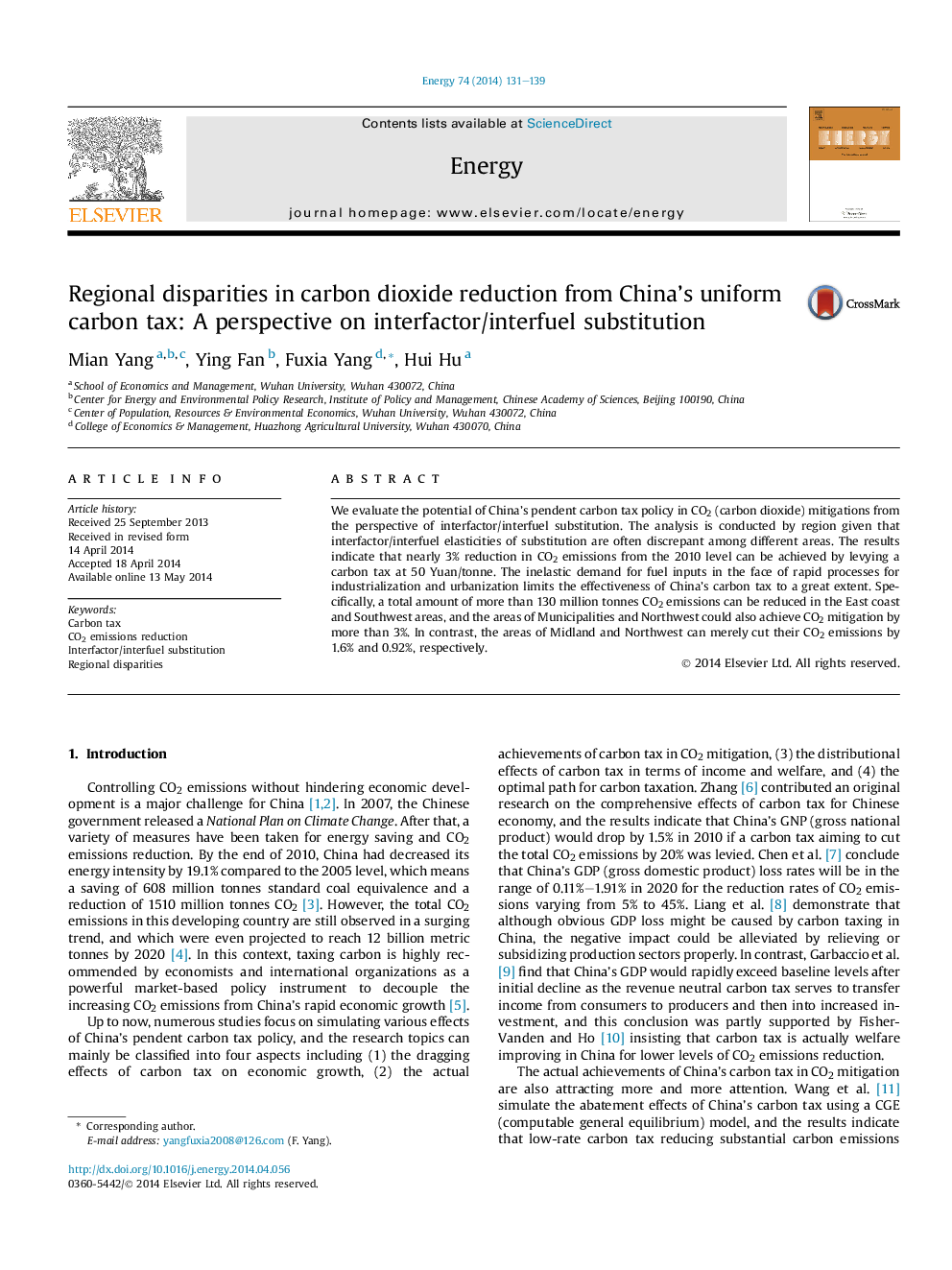| Article ID | Journal | Published Year | Pages | File Type |
|---|---|---|---|---|
| 1732445 | Energy | 2014 | 9 Pages |
•Examining uneven effects of China's uniform carbon tax in regional CO2 mitigation.•Taxing carbon at 50 Yuan/tonne reduces China's CO2 emissions by 2.85% in 2010.•Inelastic demands for energy/fuel limit the effectiveness of carbon tax greatly.•Substantial CO2 reduction can be achieved in the areas of East coast and Southwest.•Very little CO2 reduction is observed in the areas of Midland and Northwest.
We evaluate the potential of China's pendent carbon tax policy in CO2 (carbon dioxide) mitigations from the perspective of interfactor/interfuel substitution. The analysis is conducted by region given that interfactor/interfuel elasticities of substitution are often discrepant among different areas. The results indicate that nearly 3% reduction in CO2 emissions from the 2010 level can be achieved by levying a carbon tax at 50 Yuan/tonne. The inelastic demand for fuel inputs in the face of rapid processes for industrialization and urbanization limits the effectiveness of China's carbon tax to a great extent. Specifically, a total amount of more than 130 million tonnes CO2 emissions can be reduced in the East coast and Southwest areas, and the areas of Municipalities and Northwest could also achieve CO2 mitigation by more than 3%. In contrast, the areas of Midland and Northwest can merely cut their CO2 emissions by 1.6% and 0.92%, respectively.
